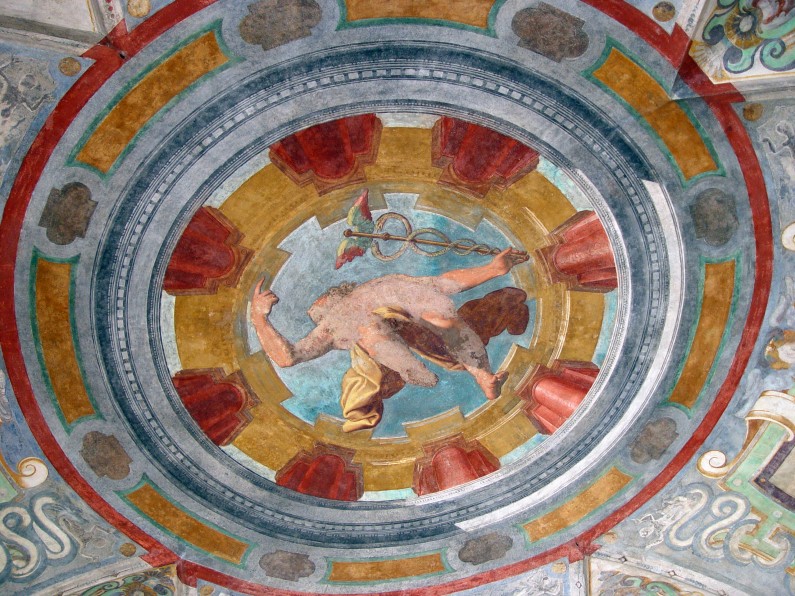
The halls on the ground floor of the 16th-century wing of the mansion (one to the left and four to the right) are reached through the entrance that cuts through the circular atrium, called the “Mercury Circle” which is inserted in a square area, and has a totally frescoed wall surface.
The walls are characterised by a geometrical surface, adorned within by the crests of the families that owned the Villa, and surrounded by twirling plants. On the four sides of the room, the walls have square recessed niches framed out by painted aedicules on the tympanic cavity on which the family stems are inscribed. The internal parts are decorated with vases and still life surmounted by a shell placed in correspondence with the niches’ convex cap.
In the centre of the dome is a fresco with a marvellous view of Hermes, a Greek divinity corresponding to Mercury in the culture of the ancient Romans, dominating from the centre of a golden exedra sustained by eight gigantic purple columns that rise in an illusionary vision towards heaven. The god is naked and wrapped only by a golden cloth. He holds in his left hand, the traditional iconographic “caduceus” attribute of a winged staff with two snakes intertwining around it. This staff represented equilibrium and was exhibited by the god to settle quarrels: in fact, Hermes, as a messenger of the gods was considered also as the mediator of the divine will.
The figure was achieved probably around 1589 during the oldest decorative campaign of the Villa. Critiques have variedly attributed the painting to the Lombard artist, Pier Francesco Mazzucchelli, so-called Morazzone (1573-1626) or to the Bolognese painter, Camillo Procaccini (1561-1629), who was involved in those same years also in the decoration of the Nymphaeum’s ceilings. Independently from the author of the work, it is evident that the political-symbolic project of the family owning the villa, which in this first room leads to the mansion, depicted the great family as one that took interest in economy and commerce, and was able to offer itself to its guests as a possible mediator in the disputes of the mansion, also due to its own culture and the thick weft of family relationships consolidated with time.
